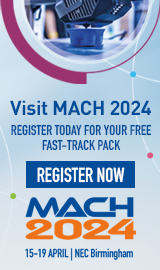DEVELOP 3D – many disciplines all in one sector and metal from plastic
Written by Dr Justin Steele-Davies, Academic Lead, Engineering, University of Derby Online Learning
I was lucky enough this year to attend DEVELOP 3D LIVE at Warwick Arts Centre. It is “the UK’s leading conference and exhibition celebrating design, engineering, and manufacturing technology and how world-leading products are brought to market faster”.
Now more than ever, I see multiple worlds colliding at an event like this. There are so many different discipline areas contributing to the leading edge and mainstream activity around additive manufacturing. Just a few examples being;
Voxel technology developed initially in computer games is being used to create models for the final stages of 3-D printing.
Data analysis, ‘Big data’ and visualisation being pushed as a way of identifying product need or product refinement.
Vision and scanning technology being used to map components, allowing rapid manufacturer of replacements.
Commercial virtual reality gaming headset being used to interact with designs before production, further shortening the development cycle.
There is such a wide range of disciplines coming together in this field and all of them are being supported by further developments from the originating area. I can see it’s only a matter of time before the VR hardware is being used in the design phase rather than just the visualisation. Smart materials and the Internet of things, combined with additive manufacturing could open the field to a massive range of potential products. The main limit at the moment is our imaginations. That is why it was so interesting to hear a talk by Greg Mark of Markforged about their latest release – The Metal X 3-D Printer.
Reducing development cycles
Greg started off by discussing the impact of being able to turn around design changes to final product very quickly. This is being driven by the likes of Elon Musk with a high-tech vision for the future wanting to remove any barriers that are currently in the way. Whether I agree with their personal visions or not, the impact it will have on the future of manufacturing is undeniably significant. If you can go from design stage to the final test product in a day, it can massively reduce development cycles. Even with computer simulation, you still need that final physical product which will regularly have iterations in its development cycle. This is not new news, however what Greg went on to say was the reason why they talk about this product so much before its release – to give people time to work out how they can actually use it!
I’m sure some of you will know people that have bought a 3-D printer, run off a couple of items and then have no idea what they can use it for next. In this case, what they’re telling engineers and designers to do is use the existing polymer-based printers to produce parts that they will be able to make in metal using the new machine. Even to the extent of sending a traditional FDM (fused deposition modelling) printer to the customer who has pre-ordered.
You might be thinking, surely there will be some process differences? However, the Metal X is turning the current accepted standard on its head. Using FDM with metal suspended in the polymer, which can then be fired in a kiln. Now the sintering process can be done at scale uniformly in an oven, in a similar way to how pottery has been made for thousands of years. At the moment, this is a high-end product being bought by the likes of NASA. I can see in the medium term this will play a significant role in the manufacture of metallic parts by AM.
It can be a challenging time for many of the big players in the market now to adapt to the new tools and requirements that are becoming part of the AM ecosystem. I’m really excited to see what’s new at next year’s event.
www.derby.ac.uk



























































































































